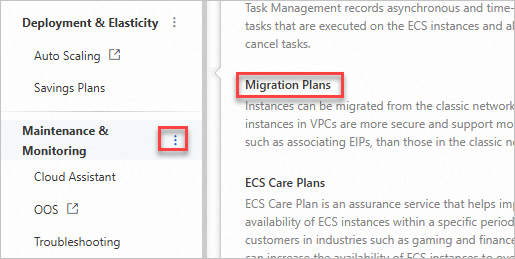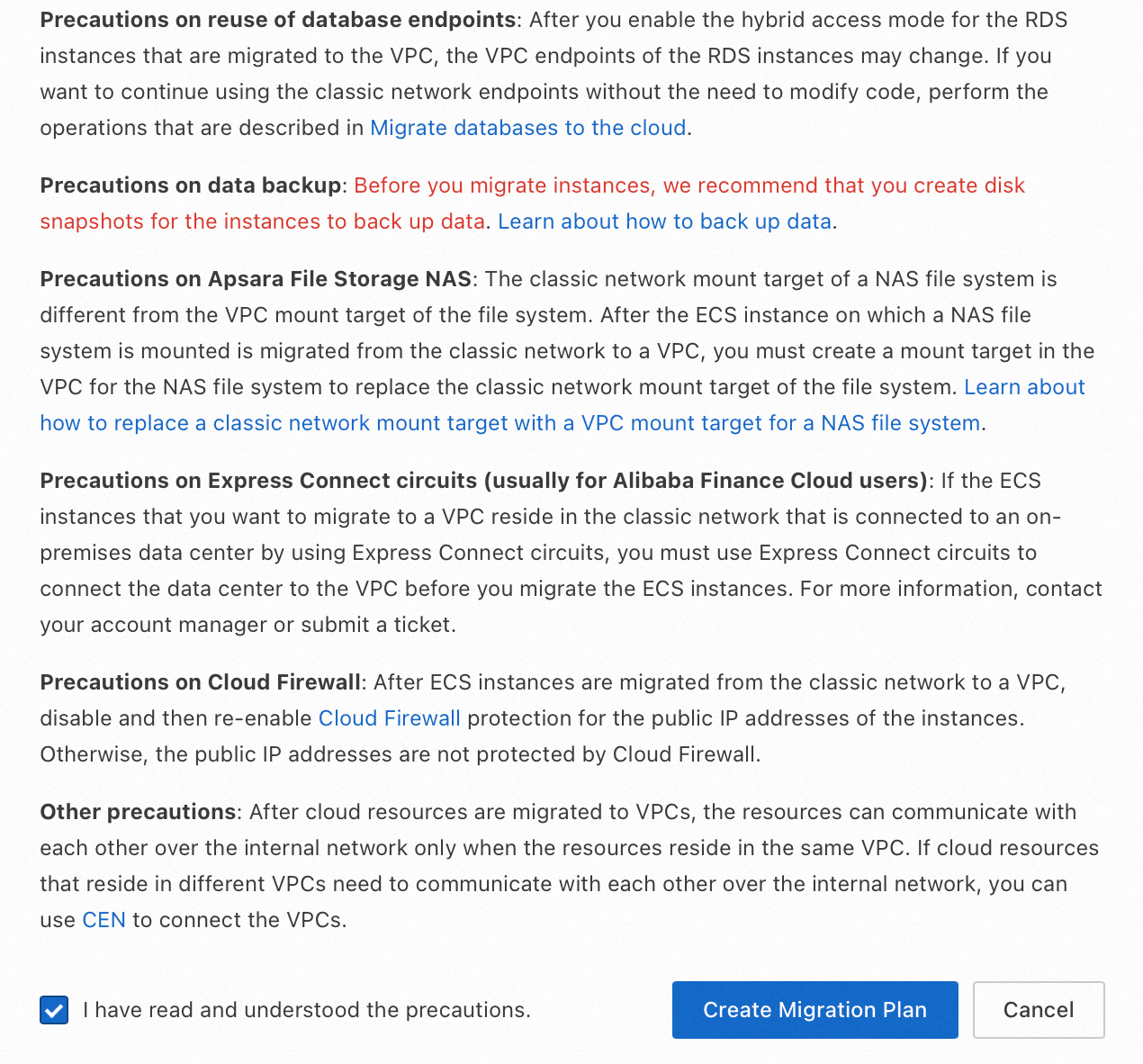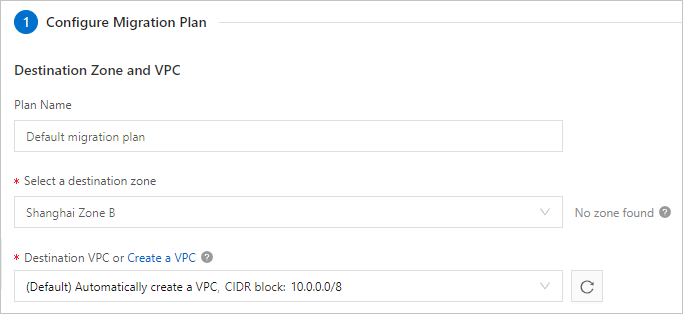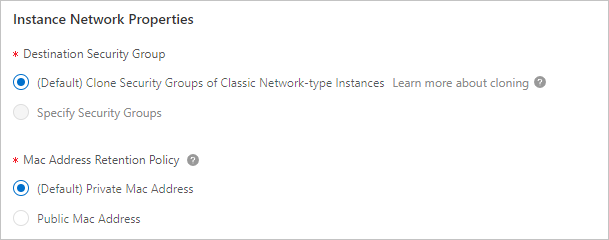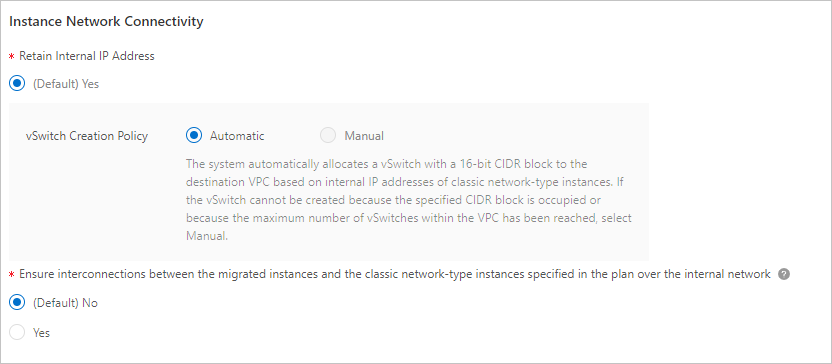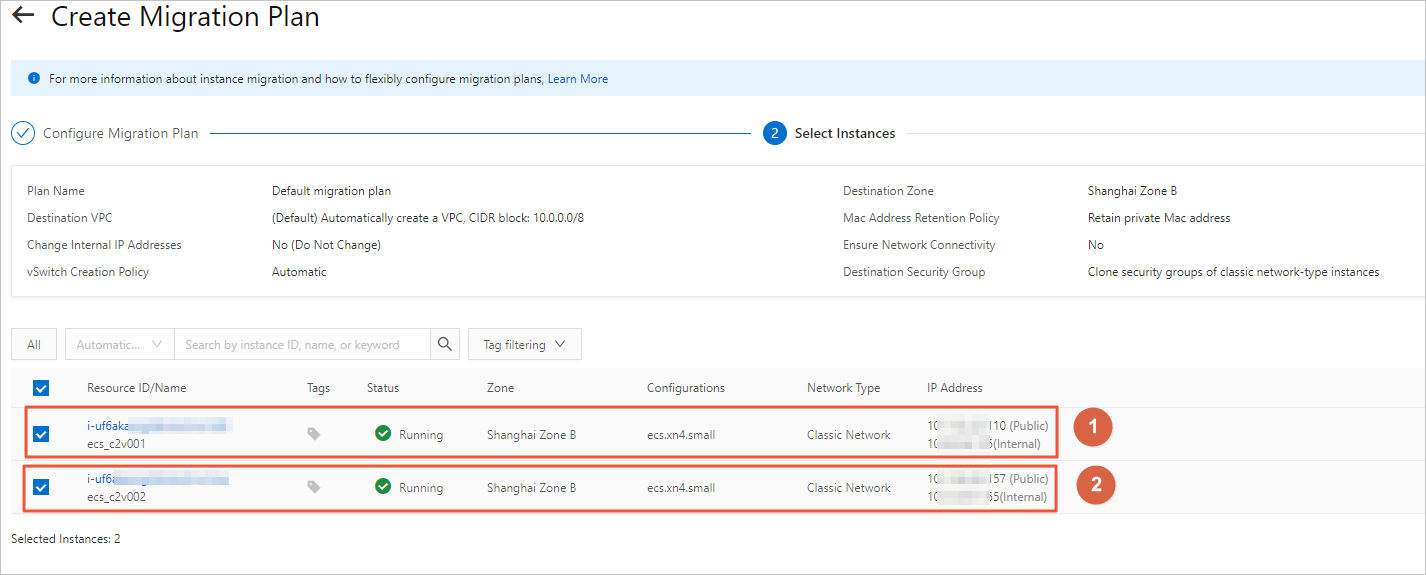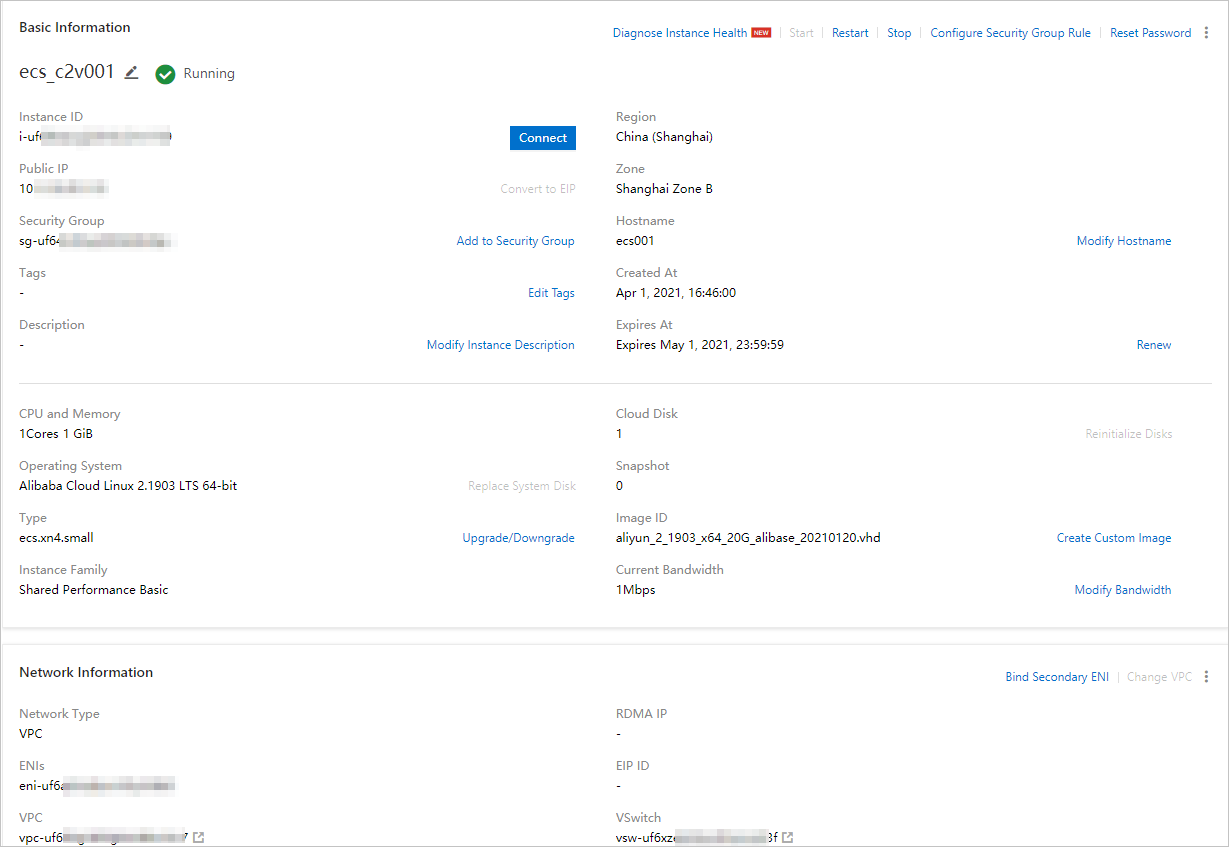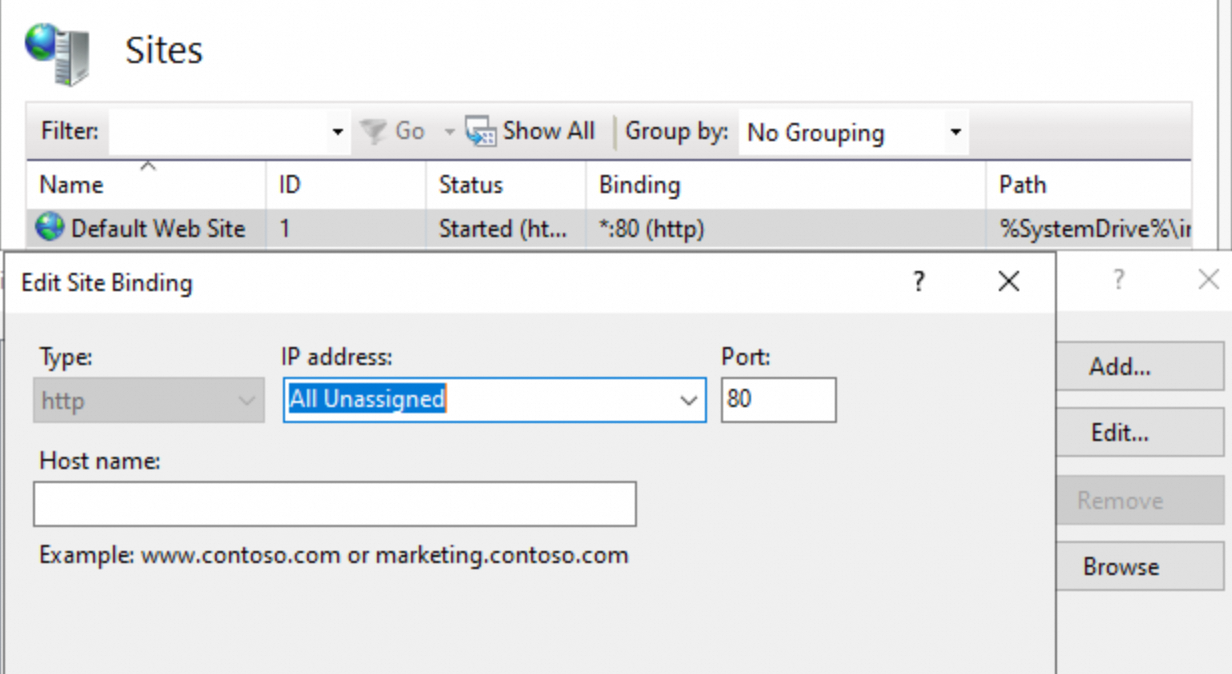Item | Description |
Period of time that is required to migrate an ECS instance | Approximately 15 minutes are required from the time when an ECS instance in the classic network is stopped until the time when the instance is migrated to and started in a specific VPC. Important If an ECS instance is started in the VPC, the computing and network resources of the instance are migrated to the VPC, and you can use the instance as expected. If an ECS instance is migrated across zones, the system continues to migrate disk data of the instance after the instance is started. In most cases, approximately 4 hours are required to migrate 100 GiB of disk data. During the migration of disk data, the I/O performance of disks degrades and snapshot-related and disk-related operations cannot be performed. The disk data migration does not affect your business. The I/O performance degradation is imperceptible to the business that is not highly sensitive to I/O performance degradation.
|
Instance status | During the migration, the ECS instance that is migrated is stopped and then restarted. We recommend that you migrate your instance during off-peak hours. |
Network type | After an ECS instance is migrated, the network type of the instance changes from classic network to VPC. For information about VPCs, see What is a VPC? Important After you migrate an ECS instance from the classic network to a VPC, you cannot migrate the instance back to the classic network. |
Software authorization codes | After an ECS instance is migrated, the authorization codes of software on the instance may change.
Solutions to issues related to software authorization code changes
Problem description: The software vendor did not approve the migration certificate issued by Alibaba Cloud. Solution: We recommend that you contact the software vendor or channel partner to submit a verification form for re-authorization. Problem description: If specific software was associated with a MAC address to register to an ECS instance, authorization errors may occur after you migrate the instance to a VPC. Cause: After you migrate the ECS instance from the classic network to a VPC, only the public or private MAC address of the instance is retained. If the MAC address with which the software is associated for registration is deleted, authorization errors occur. Solution: We recommend that you contact the software vendor to check whether the software is associated with a MAC address to register to your ECS instance. If the software is associated with a MAC address to register to your instance, you must re-associate the MAC address of the instance with the software. For information about elastic network interfaces (ENIs), see Overview.
|
Public and private IP addresses | Public IP address: After an ECS instance is migrated, the public IP address of the instance remains unchanged. Important Compared with ECS instances in the classic network, ECS instances in the VPC do not have network interface controllers (NICs) to which public IP addresses are assigned. In a VPC, a public IP address is assigned to a gateway device connected to an ECS instance. The public IP address of the gateway cannot be viewed, but the internal IP address of the instance can be viewed in the operating system of the ECS instance. If your applications require the public IP address in the operating system of the instance, you must configure the public IP address after instance migration. Scenario 1: Change the public IP address configured in the application, such as the IP address of the website of Internet Information Services (IIS) Manager. For more information, see the FAQ section of this topic. Scenario 2: If an application deployed on an instance require a public IP address that can be viewed in the operating system of the instance, you can convert the auto-assigned public IP address into an EIP in the ECS console, and then expose an EIP on a NIC by adding a secondary CIDR block to a VPC. Internal IP address: You can specify whether to retain the internal IP address of an ECS instance when you create a migration plan to migrate the instance. You can also change the internal IP address of the instance after the instance is migrated. For more information, see Primary private IP address. Important We recommend that you retain the internal IP address of the ECS instance that you want to migrate. If you do not retain the internal IP address of an ECS instance, you must configure the files, business programs, and cloud service whitelists that use the original internal IP address to use the new internal IP address after the migration. For example, you must modify the /etc/hosts file of a Linux ECS instance.
|
Device names of disks | Linux instances: The underlying virtualization technology of specific ECS instances is upgraded when the instances are migrated from the classic network to VPCs. This may result in changes to the device names of the disks on the instances. On Linux instances, disks are assigned device names within the vd[a-z] range, which serve as unique identifiers for the disks. If the disks of a Linux instance are assigned device names in the vd? format before the instance is migrated, the device names of the disks remain unchanged after the instance is migrated. If the disks of a Linux instance are assigned device names in the xvd? format before the instance is migrated, the device names of the disks are converted into the vd? format after the instance is migrated. For example, xvda, xvdb, and xvdc are converted into vda, vdb, and vdc. Alibaba Cloud updates the /etc/fstab file for Linux instances. You must check whether your applications are dependent on the original device names of the disks.
Windows instances: The device names of disks are not affected.
|
Billing | You are not charged for the migration, and the migration process does not incur additional fees. The unit price of an ECS instance type does not change before and after the migration. After you migrate ECS instances from the classic network to VPCs, all ineffective or unpaid orders related to the instances that were placed when the instances were in the classic network are canceled.
|
Regions and zones | The regions of ECS instances remain unchanged after the migration. ECS instances cannot be migrated across regions. Based on the limits on the number of ECS resources per zone, select a destination zone that provides sufficient instance resources, which may be different from the source zone.
|
Hostname | By default, the hostname does not change. However, if you changed the hostname on the instance and the hostname displayed in the ECS console is different from the hostname on the instance, we recommend that you change the hostname on the instance to be the same as the hostname displayed in the ECS console before the migration. For more information, see the Configure a hostname for an ECS instance section of the "Hostnames" topic.
|
DNS | |
Others | The ID, username, and logon password of an ECS instance remain unchanged after you migrate the instance to a VPC. If an ECS instance is added to the vServer group of a Server Load Balancer (SLB) instance before the ECS instance is migrated, the ECS instance is not automatically associated with the SLB instance after the migration. You must add the ECS instance to the vServer group of the SLB instance. For more information, see the Modify a vServer group section of the "Create and manage a vServer group" topic. Important You can no longer add ECS instances in the classic network to the vServer group of an SLB instance.
|
 Elastic Compute Service (ECS)
Elastic Compute Service (ECS)
 Container Compute Service (ACS)
Container Compute Service (ACS)







 > Migration Plans
> Migration Plans